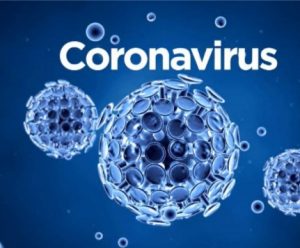General COVID-19 Information
The World Health Organization: Common COVID-19 Myths
The World Health Organization: Video Advice for the Public
Center for Disease Control: COVID-19 Information
Fairfax County Government: Common COVID-19 Myths and Rumors
Fairfax County COVID-19 Case Data
Loudon County COVID-19 Case Data
Coronavirus Updates from The Washington Post
Coronavirus Updates from The New York Times
COVID -19 Vaccine Information
Virginia is prioritizing their rollout of the COVID-19 vaccine to frontline healthcare workers, who assist directly in the care and treatment of COVID-19 patients. The state’s other top priority will be to distribute the vaccine to the elderly in long-term care facilities. The Virginia Department of Health estimates that the state will be able to obtain 500,000 COVID-19 vaccines to help inoculate these high-risk populations.
We understand that many of you have conditions that make you extremely vulnerable to COVID-19, and that vaccination would be essential for your safety. We assure you that more vaccine information will be communicated as soon as it becomes available. If you are interested in enrolling in a clinical trial associated with COVID-19, please visit the www.coronaviruspreventionnetwork.org.
COVID-19 Diagnosing Tool
COVID-19 Self-Assessment (Human Dx)
COVID-19 Self-Assessment (CDC in Partnership with Google)
COVID-19 Self-Assessment (CDC in Partnership with Apple)
What To Do If You Have Been Exposed
If you had close contact* with a person who has been diagnosed with COVID-19, self-quarantine (stay home) and monitor your health for symptoms of COVID-19 for 14 days after your last contact. *Close contact is defined as being with someone who no masks and not physical distancing for greater than 15 minutes.
- Answer the call. Your local health department will reach out to you with more recommendations if you are identified as a close contact during contact tracing
- Stay home and away from others (“self-quarantine”). Avoid contact with others to avoid spreading the infection to others. Do not go to work or school. Do not take public transportation, taxis, or ride-shares, if possible. Your local health department can assist you with making sure that your basic needs (for example, food and medication) are being met.
- Monitor your health. Take your temperature with a thermometer two times a day (once in the morning, once at night) and watch for fever. Also, watch for other signs and symptoms of COVID-19 such as cough, shortness of breath, chills, muscle pain, sore throat, or new loss of taste or smell.
- How long do I need to stay home? It may take up to 14 days from exposure for you to develop COVID-19. Self-quarantine and monitor your health for 14 days from when you last had contact with the infected person.
What To Do If You Have COVID-19
If you are sick with COVID-19 or think you might have COVID-19: stay home and separate yourself from other people in the home as much as possible. This is known as home isolation.
Treat symptoms with non-prescription medicines and call ahead before visiting a doctor
- Use over-the-counter medications based on your symptoms. Follow all usage and warning information on the label.
- Get rest and drink plenty of water or clear liquids. Avoid alcohol or drinks with caffeine, such as sodas, tea, and coffee.
- Seek medical attention right away if your illness is getting worse (e.g., difficulty breathing or fever that won’t go down after using fever reducing medication). Call the doctor’s office and tell them you have or may have COVID-19.
- Get medical attention right away if you have any medical emergency. Call 911 and notify the dispatch personnel that you have or may have COVID-19. Emergency warning signs of COVID-19 can include: trouble breathing, pain or pressure in the chest that won’t go away, new confusion or inability to arouse or wake, or bluish lips or face.
| Symptom | Over-the-Counter Treatments* |
| Fever or headache or body aches | Use a mild pain reliever such as acetaminophen (Tylenol) or ibuprofen (e.g., Advil or Motrin) |
| Sore throat | Use a mild pain reliever such as acetaminophen (Tylenol), throat sprays like chloraseptic spray, or cough drops |
| Productive cough (wet cough with mucus) | Use an expectorant that contains guaifenesin (e.g., Robitussin or Mucinex) |
| Dry cough (without mucus) | Use a cough suppressant that contains dextromethorphan (e.g., Delsym) |
| Both productive and dry cough | Use a combination guaifenesin/dextromethorphan product (e.g., Mucinex DM or Robitussin DM) |
| Stuffy/runny nose | Use a nasal decongestant that contains phenylephrine or pseudoephedrine (e.g, Sudafed), saline nasal spray, or oral antihistamines (e.g., Claritin or Zyrtec) |
After Quarantine Care
Most people with COVID-19 can be ‘released’ from isolation and can be around others after:
- At least 10 days have passed since symptoms first appeared, and
- At least 24 hours with no fever without fever-reducing medication, and
- Symptoms have improved
- If you tested positive for COVID-19 but never had any symptoms, you can be around others after 10 days have passed since the first positive diagnostic test.
Infograph For Ending Home Isolation


